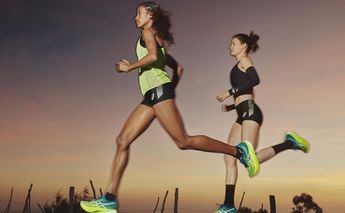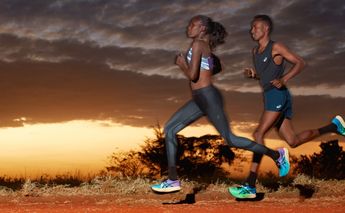Get to know your personal running style in order to find running shoes that are perfect for you.
Your 'gait' – they way you walk and run – is unique to you. And, there is a science to that - since you spend a lot of time in a pair of shoes, it's worth the effort learning more about your personal running style in order to find the ideal pair of running shoes for you.
(Hint: Comfort is key.)
From the all-too-common lost toenails to debilitating blisters, many (if not most) of these situations can be avoided by investing a little time in getting the right running shoe. That means the shoe for your sport, your weight, your gait and pronation, and the type of terrain you're pounding. Here is what you should keep in mind:
1. Intended Use
The range of shoes in a store can be daunting, but you can exclude a vast number of models straightaway by focusing on what exactly you're going to be doing with them. Will you be road running, running on a purpose-built track or perhaps on a forest trail? All these surfaces require a different kind of shoe. Another basic distinction is between racing and training shoes.
2. Pronation Type
Pronation is the term used for the way your foot rolls when you walk and run. Essentially, when buying any kind of sport shoe, you should know your pronation type first. This is exactly the sort of knowledge that, if adhered to, could prevent bleeding blisters and the like. Each shoe on the market is suitable for a type of pronation. Your pronation type determines how much and where you need support and cushioning in your shoe. You can find out what your pronation type is by getting an expert gait analysis done for you – many specialist running retail stores will offer this service. For a detailed but easy-to-understand guide on how this is evaluated, read Understanding Pronation.
3. Size: Length
Most people have a very fixed idea about their shoe size. However, there is no real universal guide and the size of your shoe can still vary depending on what type you buy. Keep an open mind with your shoe size and remember the following: your foot will need more room the more you run. The further you run the more your foot will naturally expand. This means it's wise to have just a little extra room in your shoe. Generally, you should be able to measure a finger's width of space between your big toe and the tip of the shoe. You may even need to move up a whole size from your standard shoe size for longer distance running. Black, bruised or even lost toenails are signs of trauma suffered by toes hitting the inside of a shoe, so review your size of shoe if this is a problem for you.
4. Size: Width
The width of your shoe is equally as important as the length when it comes to a good fit. People are not always built in perfect proportion and often have wider or narrower feet than the 'norm'. People who have problems with the width of a shoe will have too much friction between their foot and the shoe, and risk getting blisters as a result of that movement. If you recognise this problem from your own experience, consider a shoe with a specially wide or narrow last.
5. Weight
Weight refers to two things. First the weight of the runner. If you are a heavy or bigger built runner then you may need a shoe with a lot of support. The other weight consideration is that of the shoe. Generally, since you are going to be wearing your shoes (carrying them, effectively) for many kilometres, the lighter they are the better. Your feet have to support you a long way and so the shoe should move with you, not weigh you down. The good news is shoes are generally getting lighter and lighter as new materials are developed.
6. Socks
When you are buying shoes try them on in the evening (when your foot is slightly bigger) and try them on with running socks. There is a wide range available, with socks which are specifically designed for running and vastly improve the feeling of comfort and support inside the shoe.
Shoes and socks together create the ultimate fit, and provide a healthy environment for your foot, minimising heat, friction and moisture – which can only improve your comfort and, by extension, your performance.



